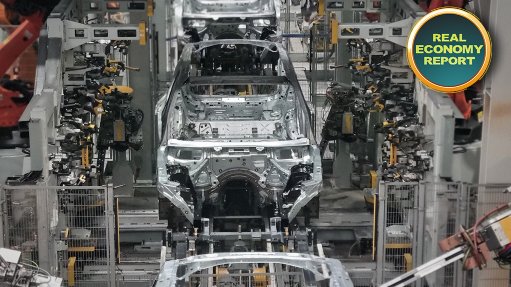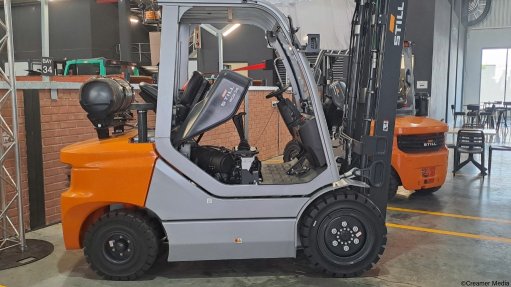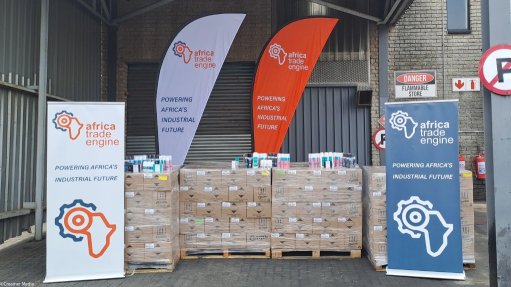Navigating the climate change challenges to sustainable transportation
This article has been supplied.
By: Erick Wessels - Sales Director, RS South Africa
The transport sector is responsible for an increasing share of the world’s greenhouse gas (GHG) emissions and, from 2010 to 2019, it was the fastest-growing sector in terms of fossil fuel combustion. In 2019, transport was the second largest source of CO2 emissions after the power sector. Transport was responsible for 30% of global final energy demand and 23% of global direct CO2 emissions from the energy sector that year.
Road transport, encompassing both passenger and freight vehicles, represents the largest segment of global transport. This sector's growth, particularly in commercial vehicle sales, is largely fuelled by the increasing demand for road freight transport.
In 2019, over 26 million new commercial vehicles were sold, driven primarily by strong demand in high-income countries. Looking ahead, the global fleet of passenger and commercial vehicles is projected to more than double by 2050. This expansion will include a significant number of older, polluting vehicles, which are expected to persist in circulation, especially in regions like Africa, Central Asia, and Latin America.
Hence, the global transport industry is a major emitter of greenhouse gases, significantly contributing to climate change. In this article, RS provides some insight into how the transport industry has evolved in recent years to mitigate its environmental impact.
According to the European Environment Agency (EEA), the transport sector is responsible for about a quarter of the GHG emissions in the European Union (EU) alone. It also contributes to noise pollution, air pollution, and habitat fragmentation.
Notably, the transport sector is the only large economic sector in the EU to have seen an increase in GHG emissions since 1990. Between 2000 and 2019, the sector experienced significant demand increases: a 20% rise in passenger travel, an 86% surge in air travel, an 18% increase in road transport, and a 22% growth in freight transport.
This situation calls for urgent action, especially with the EU aiming for carbon neutrality by 2050. As the demand for transport services indirectly impacts carbon emissions, the key solution lies in finding innovative ways to reduce this impact and encouraging people to walk, cycle, and use public transport.
Electrification has emerged as a crucial method for achieving sustainable transport. Electric vehicles (EVs) have the potential to revolutionise mobility, significantly reducing GHG emissions and reliance on fossil fuels.
To achieve a cleaner transport sector, a combination of measures needs to be implemented globally, from better-designed cities to safe and comfortable walking and cycling facilities, increased public transport, and cleaner and more efficient on-road fleets, including EVs.
Over the last 20 years, EVs have experienced significant technological developments that have not only lowered their costs but also reduced their environmental footprint and increased their utility. At the same time, public transport and shared mobility are key ingredients for efficient transportation.
However, the introduction of EVs in fleets is often the first step to overcoming challenges and barriers to electric mobility and is critical to its wider adoption around the world. To meet the targets of the Paris Climate Agreement and reduce increasing air pollution, it is essential that low and middle-income countries are part of a global shift to zero emissions e-mobility.
The UN Environment Programme (UNEP), together with leading international organisations and in collaboration with partners from the private sector, finance and academia have developed a new global programme to support the shift to electric mobility in low and middle-income countries worldwide. UNEP’s Electric Mobility Programme is operational at the national, regional and global levels.
At the national level, more than 50 low and middle-income countries are supported with the introduction and shift to electric mobility through the Programme and associated projects such as the SOLUTIONS+ project implemented by the Urban Electric Mobility Initiative (UEMI).
At the regional level, UNEP together with the Asian Development Bank (ADB), the European Bank for Reconstruction and Development (EBRD), and the Centro de Movilidad Sostenible has established four Support and Investment Platforms to create communities of practice and e-mobility market places in Africa (UNEP), Asia & the Pacific (ADB), Central and Eastern Europe, West Asia and Middle East (EBRD), and Latin America & the Caribbean (CMS).
A main advantage of EVs is their lack of exhaust emissions. Unlike internal combustion engines that burn fossil fuels, EVs use battery- or fuel-cell-powered engines that do not produce greenhouse gas emissions directly. This shift not only mitigates health risks associated with vehicle emissions but also enhances local air quality by reducing air pollution.
The environmental benefits of EVs are maximised when they are charged with renewable energy. As our electricity grid incorporates more renewable sources, EVs offer a pathway to decouple transportation from fossil fuel consumption, further reducing GHG emissions and fostering a sustainable energy ecosystem.
Public transport plays a pivotal role in achieving sustainable transport by providing efficient and affordable mobility to a larger population compared to private vehicles. It can significantly reduce greenhouse gas emissions and alleviate traffic congestion, which in turn decreases fuel consumption.
Buses, trams, trains, and underground transport can move more people with fewer emissions compared to individual cars. Replacing a private car with public transport can cut the carbon footprint per person by up to 2.2 tons a year, according to the UN.
Moreover, public transport vehicles are designed for maximum capacity and fuel efficiency. Innovations such as hybrid and electric buses further reduce fuel consumption and pollution levels. Encouraging the use of public transport can also ease traffic congestion in cities, improving traffic flow and reducing commute times.
The Electric Vehicle White Paper, released in November 2023, addresses e-mobility in South Africa from both manufacturing and local market perspectives. The shift to e-mobility presents substantial challenges and opportunities for South Africa's automotive component supply chain. The global push for electric vehicles (EVs), driven by international sustainability goals, necessitates that South Africa adapt its manufacturing processes and component supply chains to remain competitive.
South Africa's automotive industry is a significant contributor to the national economy, accounting for about 5.3% of the country’s GDP, with 3.2% from manufacturing and 2.1% from retail. The sector is also a major employer, with the manufacturing segment alone providing around 110 000 jobs [1].
Transitioning to EV manufacturing could create numerous new employment opportunities. The shift is expected to increase demand for skills in battery manufacturing, electronic engineering, and charging infrastructure development. This transition could lead to the creation of approximately 145 000 new jobs across the supply chain, particularly in the production of lithium-ion batteries and other EV components [2].
The European Union (EU) and the United Kingdom have announced plans to phase out internal combustion engine vehicles by 2035. Given that these regions account for a substantial portion of South Africa's vehicle exports – with the EU alone comprising 75.5% of light vehicle exports in 2023 – South Africa's automotive industry must align with these markets’ evolving standards to maintain and enhance its export potential [3].
South Africa’s EV policy is outlined in its Electric Vehicle Roadmap, part of the broader South African Automotive Masterplan 2035 (SAAM). The roadmap aims to transition the automotive market and production capacity towards EVs while addressing critical energy shortages and the need to decarbonise the economy.
While electrification offers a promising solution, it is not universally applicable, particularly for sectors like aviation and maritime transport that require high power density and long range. Alternative fuels such as ammonia for marine applications, biofuels, hydrogen fuel cells, and synthetic fuels present viable options.
Ammonia, produced using renewable energy through green ammonia production, is a carbon-neutral fuel ideal for marine applications. Biofuels, derived from biomass like plant residues and waste materials, can replace or complement traditional fuels, reducing GHG emissions.
The ultimate goal is to adopt zero-emission fuels, such as hydrogen produced from renewable sources and advanced technologies like carbon capture, utilisation, and storage (CCUS). Developing these technologies ensures that the production of alternative fuels does not generate significant emissions.
Since the early 2000s, significant strides have been made in reducing the environmental impact of transportation. Innovations have introduced new technologies to the market, and further developments are anticipated.
However, infrastructure changes are essential to accommodate these advancements. We are moving in the right direction. Increasing awareness of carbon footprints is leading to more sustainable choices in our daily lives, paving the way for a greener future.
With 24/7 operations in place, tight maintenance schedules to work to and lots of fragmentation and complexity across the various sectors within the transportation industry, we know that you need to work with someone that you can trust.
At RS, we understand the challenges that your industry faces. With a wide range of products, services, and solutions to help you identify opportunities to innovate, streamline your processes, and save both time and money, we are here to help you keep your business running in the most efficient way.
Our purpose, making amazing happen for a better world, reflects our commitment to delivering results for people, planet and profit. Our 2030 ESG action plan is based on four global goals: advancing sustainability, championing education and innovation, empowering our people and doing business responsibly.
At RS, a strong environment, social and governance (ESG) approach is core to our purpose, strategy and decision making. From how we work every day to how we create greater long-term value for our stakeholders. Our strong ESG ethos is embedded from start to finish.
For more information about RS’s full product range and solutions offering, visit their website and follow them on LinkedIn for regular updates on innovative solutions.
Article Enquiry
Email Article
Save Article
Feedback
To advertise email advertising@creamermedia.co.za or click here
Comments
Press Office
Announcements
What's On
Subscribe to improve your user experience...
Option 1 (equivalent of R125 a month):
Receive a weekly copy of Creamer Media's Engineering News & Mining Weekly magazine
(print copy for those in South Africa and e-magazine for those outside of South Africa)
Receive daily email newsletters
Access to full search results
Access archive of magazine back copies
Access to Projects in Progress
Access to ONE Research Report of your choice in PDF format
Option 2 (equivalent of R375 a month):
All benefits from Option 1
PLUS
Access to Creamer Media's Research Channel Africa for ALL Research Reports, in PDF format, on various industrial and mining sectors
including Electricity; Water; Energy Transition; Hydrogen; Roads, Rail and Ports; Coal; Gold; Platinum; Battery Metals; etc.
Already a subscriber?
Forgotten your password?
Receive weekly copy of Creamer Media's Engineering News & Mining Weekly magazine (print copy for those in South Africa and e-magazine for those outside of South Africa)
➕
Recieve daily email newsletters
➕
Access to full search results
➕
Access archive of magazine back copies
➕
Access to Projects in Progress
➕
Access to ONE Research Report of your choice in PDF format
RESEARCH CHANNEL AFRICA
R4500 (equivalent of R375 a month)
SUBSCRIBEAll benefits from Option 1
➕
Access to Creamer Media's Research Channel Africa for ALL Research Reports on various industrial and mining sectors, in PDF format, including on:
Electricity
➕
Water
➕
Energy Transition
➕
Hydrogen
➕
Roads, Rail and Ports
➕
Coal
➕
Gold
➕
Platinum
➕
Battery Metals
➕
etc.
Receive all benefits from Option 1 or Option 2 delivered to numerous people at your company
➕
Multiple User names and Passwords for simultaneous log-ins
➕
Intranet integration access to all in your organisation























